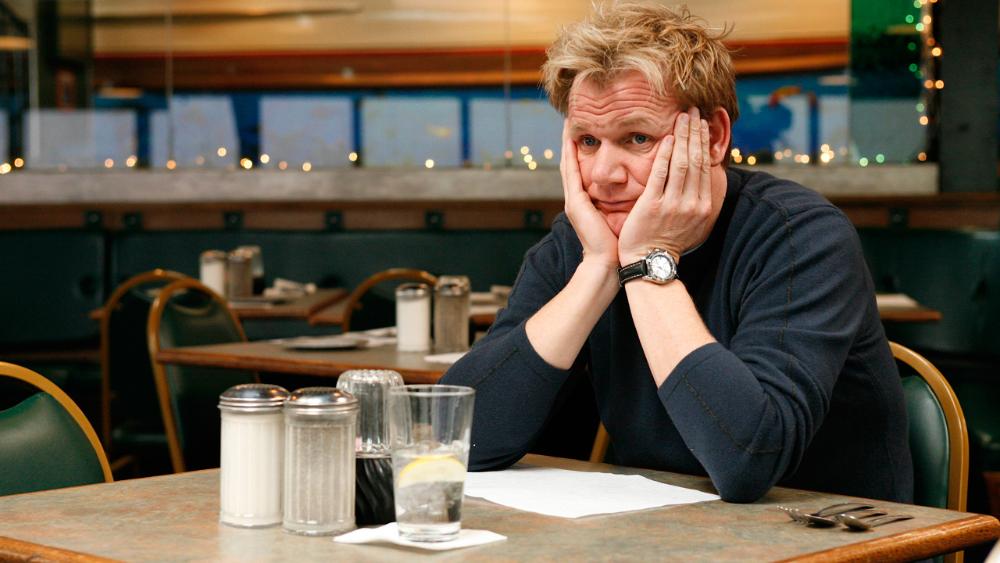By: Chris | July 20, 2016

In previous posts I have discussed the aspects of scan and dividing your attention, how these are done in Air Traffic Control, how businesses may be able to apply these techniques and why it is important to have a systematic approach to using these skills. If you have missed the previous instalments you can catch up by following this link Blog Intro
In this part I will introduce some further skills that link directly with the previous two, those are priorities, planning and workrate.
As an Air Traffic Controller working in the Visual Control Room (that’s the glass “goldfish bowl” at the top of a control tower) you are responsible for the safety of the aircraft manoeuvring on the ground and within the visual circuit (an imaginary racet...
Category: Process
Tags:
By: Chris | April 04, 2016

A few weeks ago I was TV channel hopping trying to find something that would stimulate the brain rather than shrivel it up. After flicking past another portion of “Man vs Food”, several shopping channels and a repeat of a Top Gear road trip, I finally landed on “Gordon Ramsay’s Kitchen Nightmares – USA”. Resigned to the fact that any intellectual stimulation was not going to be provided courtesy of my “Idiot Lantern”, I started to watch the programme…
What happened next rather surprised me. For those of you that have not had the pleasure of televisual entertainment provided by Chef Ramsay need to know a few things. Firstly, Chef Ramsay is an expert chef, he was the first Scottish chef to be awarded three Michelin Stars. He was nearly a professional footballer, until injury forced him to change career. He has many restaurants in the UK and abroad. Americans love him and respect him. He has had (and continues to have) a successful TV career. He is a family man. Oh and he swears…LOTS!
The format of the Kitchen Nightmare show is pretty simple. There is a real-life restaurant that has some sort of issue, Ramsay visits it, swears at the staff and owner, they change a few things and the restaurant becomes a success!
But actually, there is rather more to it than meets the eye! If you break down each episode of this show there is a pattern that emerges time and time again… and whether Chef Ramsay knows it or not, him (and the production team – let’s not be so naïve to assume that he is doing this alone!) are applying some basic change management and process redesign methodology.
Before the initial visit Ramsay is aware of why the owners have called him in and what the vision of the restaurant is, or was. Multitudes of reasons, but normally that the restaurant, once popular and profitable, is now underperforming and losing money.
Chef Ramsay makes an initial visit. He samples the food, looks at the ambiance and décor, staff and cleanliness… He then does a second visit, watching the kitchen, the staff, the process and environment. What he is doing is Gemba or “going to the work”. Ramsay is observing, noting issues and taking stock of what is going on. Interestingly, all he does is observe. He offers limited feedback at this stage (apart from not eating the food when it is gross… which is more or less always)… Oh and yes, he swears a bit!
Next, in this “Nightmare” journey, Ramsay gets the staff together and gives specific feedback, he gets the owners and gives them feedback. He shoots from the hip, tells them as it is… Oh and yes, he swears a bit!
Now usually what happens at this stage, is that some partial redesign is completed. The menu amended, the kitchen cleaned or re-vamped, then he watches them again. Normally, it is pretty diabolical. Changes are small and don’t stick, the kitchen and front of house staff revert to the old methods of working and it is pretty horrendous… Oh and yes, he swears a bit!
The next stage is truly transformational. After going to this pit of despair, Ramsay reinvigorates the staff and owners, the restaurant is modernised, kitchen becomes sparkling, uniforms changed and Ramsay has a special “Re-opening Night” set up (the restaurants featured are always packed!)
Interestingly, Chef Ramsay changes stance…. Not much swearing, if any at all, but he becomes the coach, the mentor, the trusted advisor… Change occurs!!
Sometimes, they do a re-visit 6 months later to see if things have sustained. Often they have and everyone is happy, business thriving. So how?
Ramsay and the team follow a methodology and I’ve translated it using the Chameleogenics Transformation Framework
| Chameleogenics Transformation Framework
| Ramsay’s Nightmare Method |
| Conceptualise – What is the vision?
| Pre-brief and background checks |
| Formalise – What are the issues & objectives?
| Pre-brief and background checks |
| Analyse – Understanding what is really going on by examining processes end-to-end, Gemba | 1st & 2nd Restaurant Visit, eating the food, watching the kitchens etc, Gemba |
| Enterprise – Coming up with new solutions to issues found in analysis | Coming up with new menus and ways of working after restaurant visits – Experimenting |
| Organise – Planning how to put the new solutions into action | Planning the new décor and ways of working etc. |
| Actualise – Implementing the plan
| Implementing the changes and launching |
| Stabilise – Implementing continuous improvement cycles and re-visiting regularly | Re-visit the restaurant to check changes have embedded |
So here is it, my recipe for Process Redesign a lá Ramsay Nightmares:
Ingredients:
1 Vision
A heap of Business Issues
4-5 Medium sized objectives
An amount of urgency
Healthy portion of Diagnosis
A Portion of Soul Searching
A level of Motivation
A helping of Creativity
A Sprinkle of Innovation
Elbow Grease
Some F Words (Optional)
Equipment:
People with open minds
A mould to break
Step 1. Examine your vision… If your vision isn’t matching reality extract the business issues and set to one side.
Step 2. Take your business issues extracted in step 1 and examine what they are. Take time to understand what issues you have (although no need to strip them down yet) and Formalise them with the objectives. Mix in a good amount of urgency. (TIP: Always good to share the mix so far with anyone that is going to see the completed recipe, let them taste the urgency!)
Step 3. Analyse the issues, apply some diagnosis to each of the areas. This may take a bit of time as some issues are thicker than others and may need a bit of persistence. Don’t rush the diagnosis or else there is a risk that you won’t get down to the roots, and it is normally at the roots where the juiciest issues are! (TIP: If you add in some soul searching here, it may be easier to get to the roots)
Step 4. Time to Enterprise. Mix the roots with a generous portion of creativity and blend in a sprinkle of innovation. Add a good level of motivation… you can never add too much! Don’t be concerned if your mixture looks nothing like the raw ingredients at this point… that is probably a good thing! (TIP: Always useful to break the mould at this stage!)
Step 5. Time to get Organised. Don’t just splatter your recipe everywhere, plan out where you need to put it first so that it will flourish. (TIP: Worth telling everyone that the recipe is ready!)
Step 6. Take your mixture and spread it where required. You will need some more motivation and possibly some elbow grease to make the recipe work. Keep your eye on the mixture and watch it grow. Make sure that you pay equal attention to all elements of the mixture to prevent it going flat. (TIP: Have someone help you at this stage)
Step 7. Enjoy the completed recipe. However, make sure that it is stored correctly and not ignored. Ignoring the recipe could result in the innovation and creativity that was mixed in splitting from the recipe and before you know it you’ll just be left with a messy vision and a load of issues!
Lastly, I personally don’t recommend using the F Words in this recipe… but it seems to work for Chef Ramsay!
Enjoy!
Category: Process
Tags:
 Subscribe via RSS
Subscribe via RSS